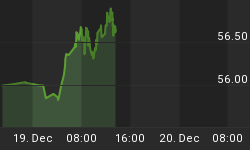Canada has now hit back at U.S. President Donald Trump by issuing tariffs worth $12.5 billion on dozens of U.S. products in retaliation for American steel and aluminum tariffs imposed one month ago and effective as of yesterday.
Aside from a long list of nearly 80 items—including everything from whisky, lawnmowers and yogurt to ketchup and maple syrup--U.S. steel products now face a tariff of 25 percent, while a vast array of aluminum products will now cost Canadian importers 10 percent more.
Canada’s tariffs aren’t just a threat: They went into effect Sunday.
It’s an exact tit-for-tat, and everyone knew it was coming.
After all, Canada was the largest exporter of steel to the United States by value last year, making it one of the countries to be most hurt by Trump’s trade tirade.
Now, the friendly neighbor to the north is one of America’s worst relations, despite the fact that Canada is the U.S.’ second-biggest trading partner in goods, just behind China.
Publicly, Trump has claimed that trade with Canada is unfair, though some maintain that the U.S. saw an overall trade surplus with Canada last year to the tune of $2.7 billion.
During the G7 in Toronto, he said the U.S. ran an $817-billion trade deficit, but the administration’s Census Bureau and Bureau of Economic Analysis says the deficient was $568 billion. Related: “Father Of The Web” Fights Back Against Internet Centralization
There’s also been some fact-checking over which numbers are being used and which are being left out. It’s been pointed out numerous times that Trump also relies only on trade in goods, not services. This makes the trade deficit looks much worse. While the U.S. bought $811 billion more in goods from other countries than they bought from the U.S., there was a surplus in American trade services.
It is also this selective use of numbers that justifies Trump’s claim of a trade deficit with Canada: There is a deficit of in the trade of goods, but a large surplus in the trade of services, which leaves us with a $2.7-billion overall trade surplus with the northern neighbor.
Now Trump is waging a war on the auto industry, threatening a 25-percent tax on automobiles imported into the U.S. from Mexico and Canada, and a 20-percent tax on all European cars coming in.
It’s another attempt to gain leverage, but it hasn’t worked so far. The only result to date has been retribution from around the world.
The auto trade war may be even bigger—and even more unsettling—than the one over steel and aluminum.
“I’m going to tax their cars coming into America and that’s the big one. You know, the cars are the big one. We can talk steel, we can talk everything: The big thing is the cars,” Trump recently stated.
In May, Trump ordered a national security probe into vehicle imports, which could bring tariffs on autos and auto parts.
The European Union said that if tariffs on auto imports are implemented it could lead to retaliation against some $300 billion in U.S. goods.
The auto industry is up in arms, with experts and carmakers alike saying the entire North American industry could be irrevocably harmed.
Even the U.S. Chamber of Commerce is launching a campaign to oppose Trump’s tariff policies, and it’s a lobbying behemoth that could possibly step in to save the day.
"The administration is threatening to undermine the economic progress it worked so hard to achieve," said Chamber President Tom Donohue in a statement to Reuters. "We should seek free and fair trade, but this is just not the way to do it."
By Fred Dunkley for Safehaven.com
More Top Reads From Safehaven.com:
















